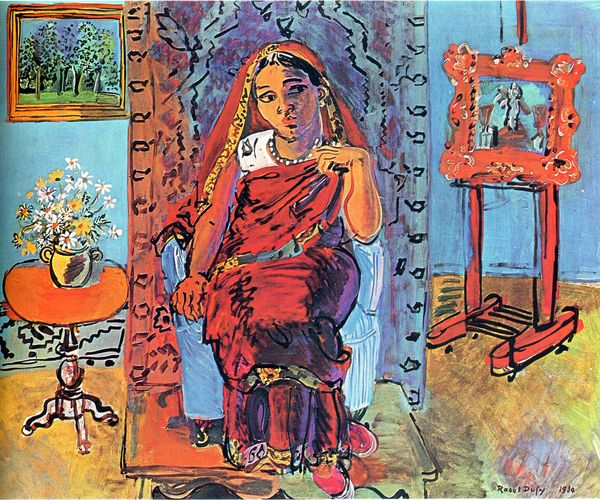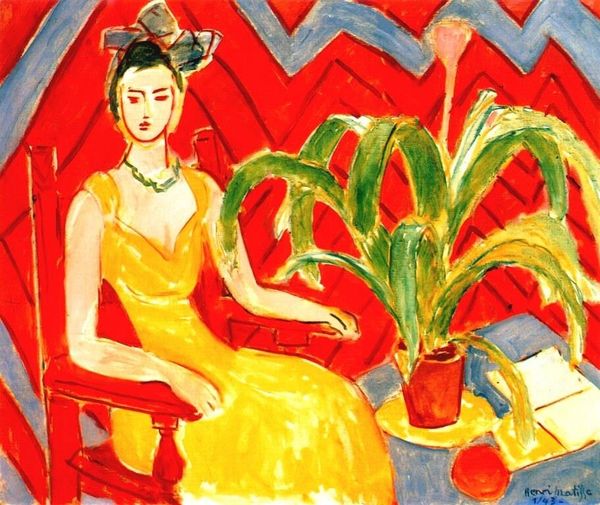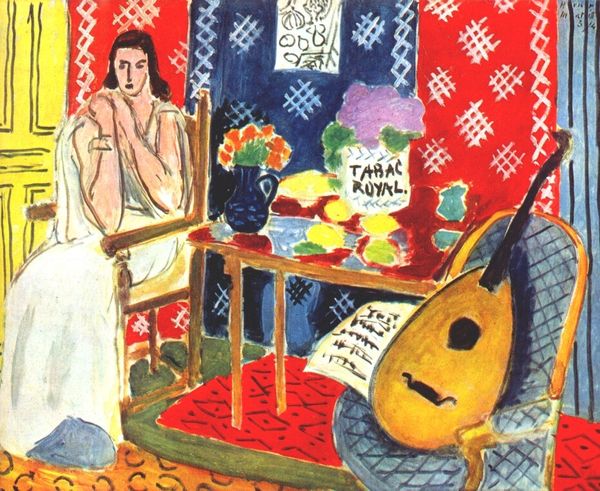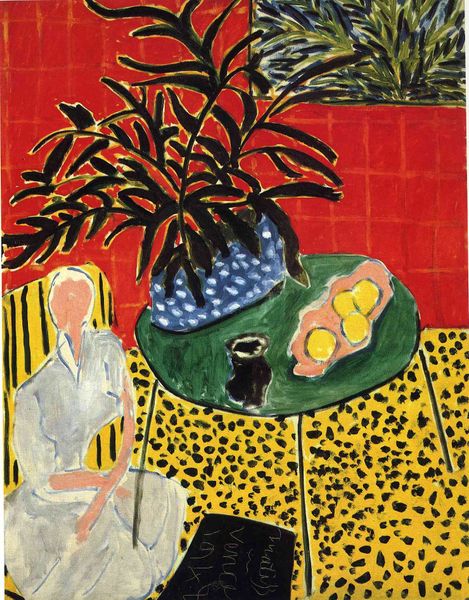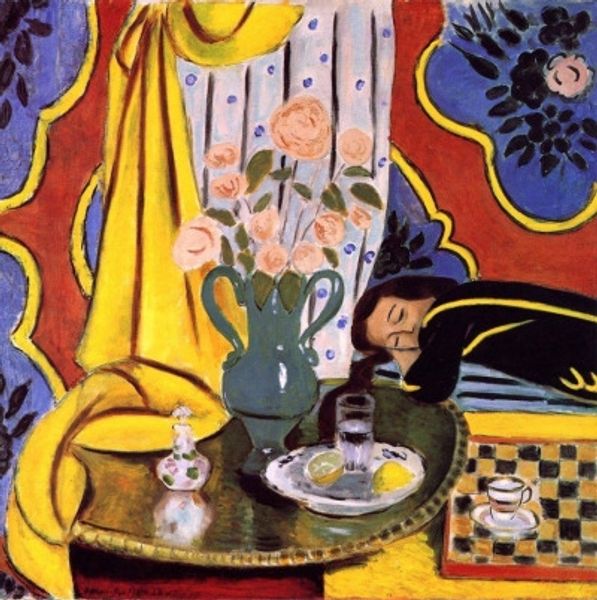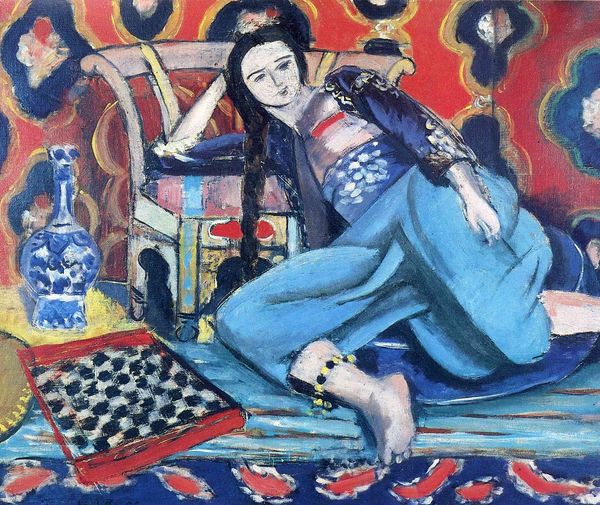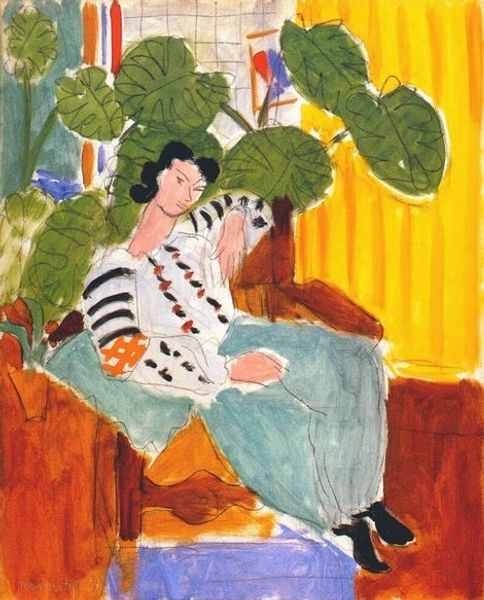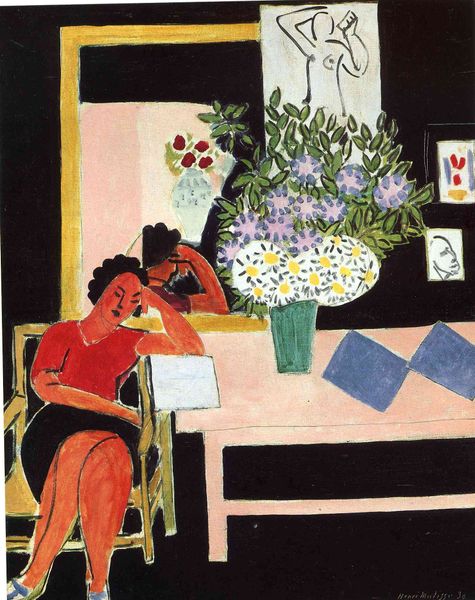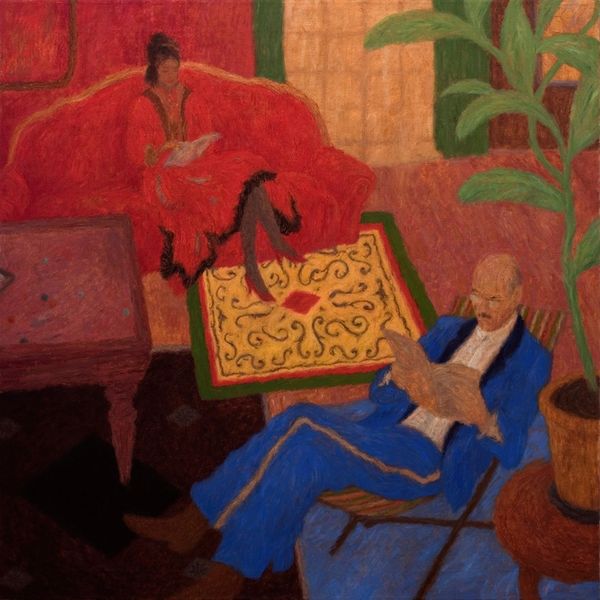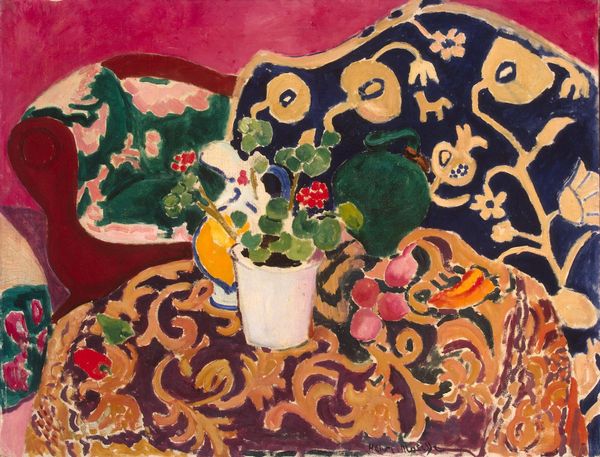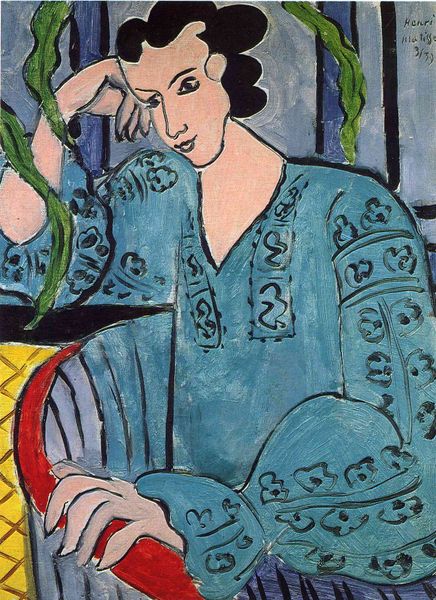
Interior with Etruscan Vase 1940
0:00
0:00
henrimatisse
Cleveland Museum of Art (CMA), Cleveland, OH, US
Dimensions: 73.5 x 108 cm
Copyright: Henri Matisse,Fair Use
Curator: Let's delve into Henri Matisse's "Interior with Etruscan Vase," painted in 1940. It currently resides at the Cleveland Museum of Art. What’s your immediate take? Editor: The colors vibrate—almost clash—yet hold together. There’s a casual domesticity countered by an element of theatrical display; and the obvious mark-making. Look at how hastily and thinly painted are some of the surface, contrasted with more worked up areas. It feels immediate. Curator: Indeed. That immediacy is a hallmark of Fauvism, isn't it? Considering that he entitled this work as such, do you notice anything particularly ancient or Italianate in this piece? Are there any traces of Fauvism? Editor: Beyond that vase? Yes. The flattened picture plane, a tension that seems ready to tip forward towards us! Then again, it's the making, right? How quickly some parts were knocked down compared to how methodically, laboriously other sections had been produced. Note for instance that this oil-based scene involved working across different kinds of canvas weaves depending on the urgency and location of an applied hue! Curator: Very keen observations on the picture plane and surface treatment! Regarding this supposed speed in its painting execution, do you think that also applies to the figure present here, and what do you see when you first looked at them in tandem with their immediate background and surrounding ornamentation and decoration? Editor: Yes. Though painted within broad outlines filled by brushwork moving generally side to side and with enough modulation not to make these "blocks" completely rigid--there are areas where figure and wallpaper do start melting! What I also see is a lack of conventional portraiture that nevertheless emphasizes their belonging to one another; that perhaps we, as the assumed patron, are encroaching on something intimately, culturally theirs. Curator: Intriguing thought. Given the title including “Etruscan Vase,” there’s an intended layering of meaning – Matisse wasn't simply representing objects, he was orchestrating a dialogue between different cultural artifacts across time periods and geographies. Do you see any thematic or formal echoes between the vase itself and the painted motifs surrounding it? What could these be about, historically, or cross-culturally speaking? Editor: It's fascinating to trace connections across objects; however, I don't view cultural heritage as monolithic in origin or expression. The 'Etruscan' title suggests a conscious desire to create that 'oldness' effect, an established kind, yet still distinct. A 'seal of legitimacy'. How materials translate across time and how one works "with" such legacy – that speaks louder. Curator: I find this conversation revealing. It underscores how diverse vantage points can enrich our interpretation of a single work, recognizing, as you put it, what objects mean across material history. Editor: Precisely. There are many layers here for one to unravel.
Comments
No comments
Be the first to comment and join the conversation on the ultimate creative platform.
